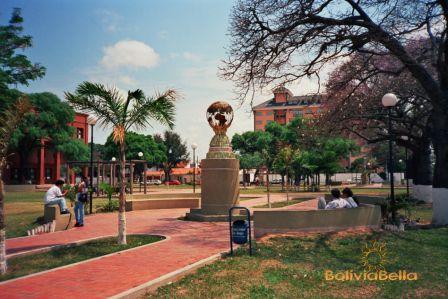|
Education in Bolivia: School System The Bolivian public education system is very lacking in terms of organization and quality, although improvements are ongoing. The schools are often not well maintained, and many don’t have adequate furnishings or classroom materials. Teachers often go on strike (closing down the schools for days or weeks on end) to protest for higher wages or other issues. Foreigners moving to Bolivia generally choose to stay away from the Public Schools, including the state universities.
Many public schools are being supported, maintained, furnished and supplied by non-profit institutions and these are usually in excellent condition. You can see how the children thrive and their learning level is higher than the national public school average at these schools. Because of this situation, there is an abundance of excellent private universities and schools to choose from. The government's failure to improve the Bolivia school system, has led to a surge in privately owned institutes, schools and universities in Bolivia (Many of these have agreements with other institutions overseas as well as exchange programs, such as UPSA University's MBA exchange with Thunderbird in Arizona. Many high schools participate in Rotary Club and other exchange programs as well.) Read this page if you plan to be a foreign exchange student in Bolivia. Price ranges at these institutions vary and there are often waiting lists for entry, so it’s always good to begin your search a year or two in advance. Anyone who can possibly afford to send their children to private schools will. There are also specific entrance requirements to fulfill, and these can differ from one educational institution to the next. The Bolivia, school year runs from February to November and summer vacation is in December and January (these being the two hottest months of the year). Don’t forget that the seasons are reversed in the Southern and Northern atmospheres when making your decision. If you plan to return to your country of origin shortly, you’ll want to plan accordingly. There are a few private schools that observe the U.S. September to June school year. A few other things to keep in mind about education in Bolivia: Elementary and high school students attend school either in the morning or in the afternoon, depending on which shift they are assigned. Therefore, the school day is short and working parents must arrange for child care for the remainder of the day. Because each school day shift is only 4 hours long, students may also attend school on Saturdays as well. There are several good daycare centers for preschool children in Santa Cruz, and many families also have a housekeeper or nanny who picks up and drops off the children. Most schools in Bolivia do not provide meals, and most require uniforms. Most schools do not provide school buses either, and few provide for after-school or extracurricular activities. (foreign or Bolivian private schools that observe the U.S. school year usually also observe a full Monday to Friday 7-hour school day, and provide meals, buses, and extracurricular programs). There are many other types of schools in Bolivia including trade and vocational schools, academies of the arts, beauty schools, driving schools, and training centers. For our purposes we will list these under
institutes.
In 1931 Elizardo Pérez founded a large nuclear school (a central school with five to eight grades) near Lake Titicaca which became the prototype for rural education in Bolivia. Today, rural schools are still called "núcleos". In 1947 the Bolivia government passed a literacy law requiring every literate Bolivian to teach at least one illiterate person to read and write and in 1956 legislation was passed that founded the public school system that still exists today. Several changes were made in 1969 and 1973 making education through age 14 compulsory. The Bolivian education system currently has a 5-year primary cycle (1st - 5th grades), followed by 3 years of intermediate school (6th - 8th grades), and four years of high school. All students follow the same curriculum during the first two years of high school. During the last two years of high school students choose to graduate with a degree in humanities or one of various technical fields. A baccalaureate degree is awarded upon graduation and is necessary in order to take the university entrance exam. In addition, the Ministry of Education and Culture of Bolivia established several hundred adult literacy centers, most in urban areas. Spending on education is not well-organized and most goes to operating costs, leaving little for expansion. About 87% of children attend primary schools, but only about 35% make it to high school. Drop-out rates are very high, especially among the poor. In rural areas, only about 40% of children attend school beyond the third grade, where many speak Quechua, Aymara or other dialects and have trouble taking classes in Spanish. Private schooling is beyond the reach of the majority of the population and university entrance exams, for those who can afford to attend, are extremely competitive and difficult. Most upper class families send their children to private Bolivian universities (which are very good) or to Europe, the U.S., Argentina, Brazil or Chile to study.     |
